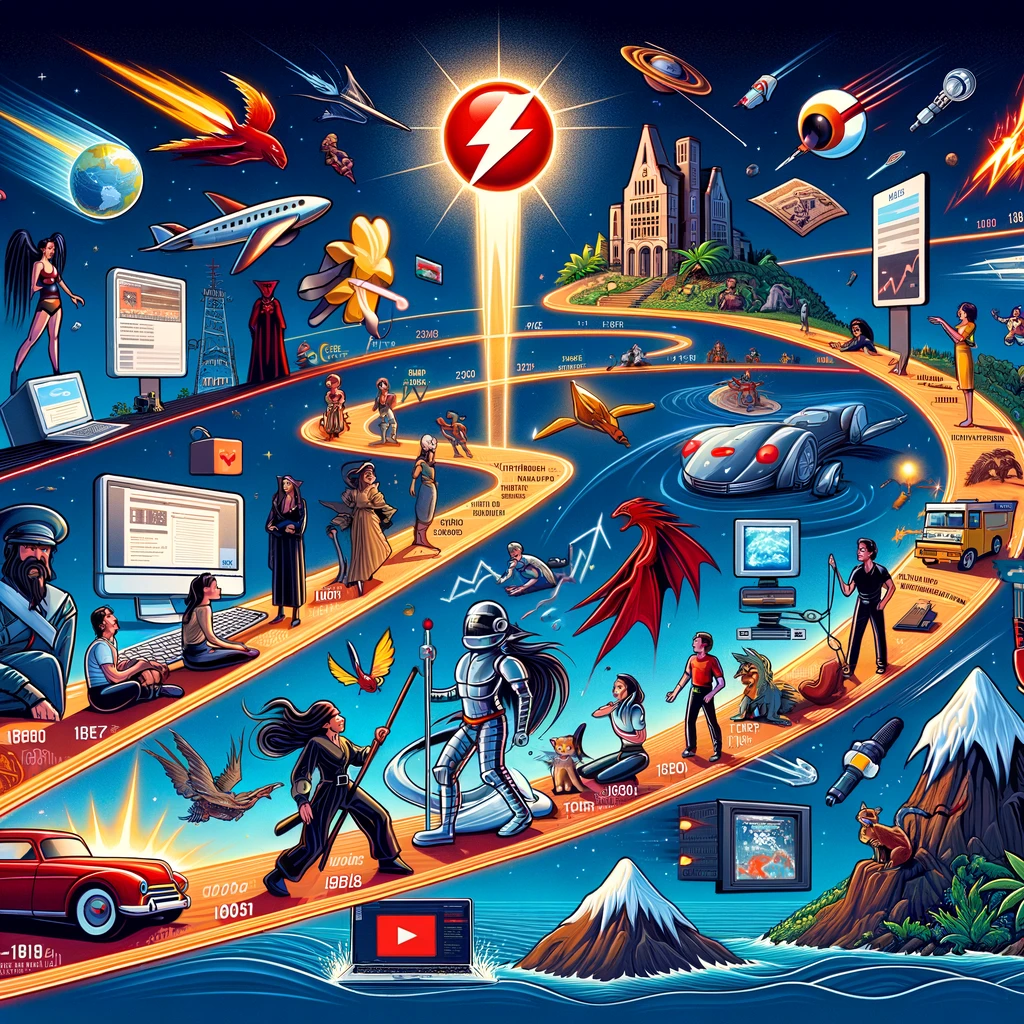Introduction to Adobe Flash
Adobe Flash, once the cornerstone of web multimedia content, revolutionized the way animations, games, and interactive experiences were delivered on the internet. Its ability to blend graphics, animation, and sound into immersive web experiences made it a ubiquitous tool in the early days of the web.
The Rise of Flash in Web Development
Flash's rise to prominence was marked by its widespread adoption for creating engaging websites, interactive advertisements, and digital games. Its vector-based animation system enabled designers to create rich, dynamic content that was lightweight enough to be easily streamed over early internet connections.
Innovations and Impact on Multimedia Content
Flash introduced a range of multimedia capabilities that were unprecedented at the time, including video playback, complex animations, and interactive capabilities. It empowered creators to build vibrant, interactive web spaces, pushing the boundaries of online storytelling and design.
Challenges and Decline of Flash
Despite its initial success, Flash faced significant challenges, including security vulnerabilities, performance issues, and a shift towards open web standards like HTML5, CSS3, and JavaScript. These factors, combined with the rise of mobile internet usage and the lack of Flash support on popular devices, led to its gradual decline.
The End of an Era: Flash's Discontinuation
Adobe officially discontinued Flash at the end of 2020, marking the end of an era for a technology that had a profound impact on the early web. The transition to more secure, efficient, and open web technologies has been largely completed, but the legacy of Flash in shaping multimedia content remains undeniable.

Figure 1: The Evolution of Adobe Flash - Charting the Rise and Fall
Preserving Flash Content for Posterity
In the wake of Flash's discontinuation, efforts have been made to preserve its vast library of content. Projects like the Internet Archive's Flashpoint initiative aim to save Flash games and animations, ensuring that this part of digital culture is not lost to history.
Lessons Learned from Flash
The story of Flash serves as a valuable lesson in the evolution of web technologies, highlighting the importance of open standards, security, and adaptability in the fast-paced world of web development.

Figure 2: Preserving Flash Content - A Digital Legacy
Conclusion
Adobe Flash will be remembered as a pioneering technology that brought rich, interactive multimedia to the early internet. Its influence on web design, animation, and gaming is a testament to the creative possibilities it unlocked, even as the digital landscape continues to evolve beyond it.

